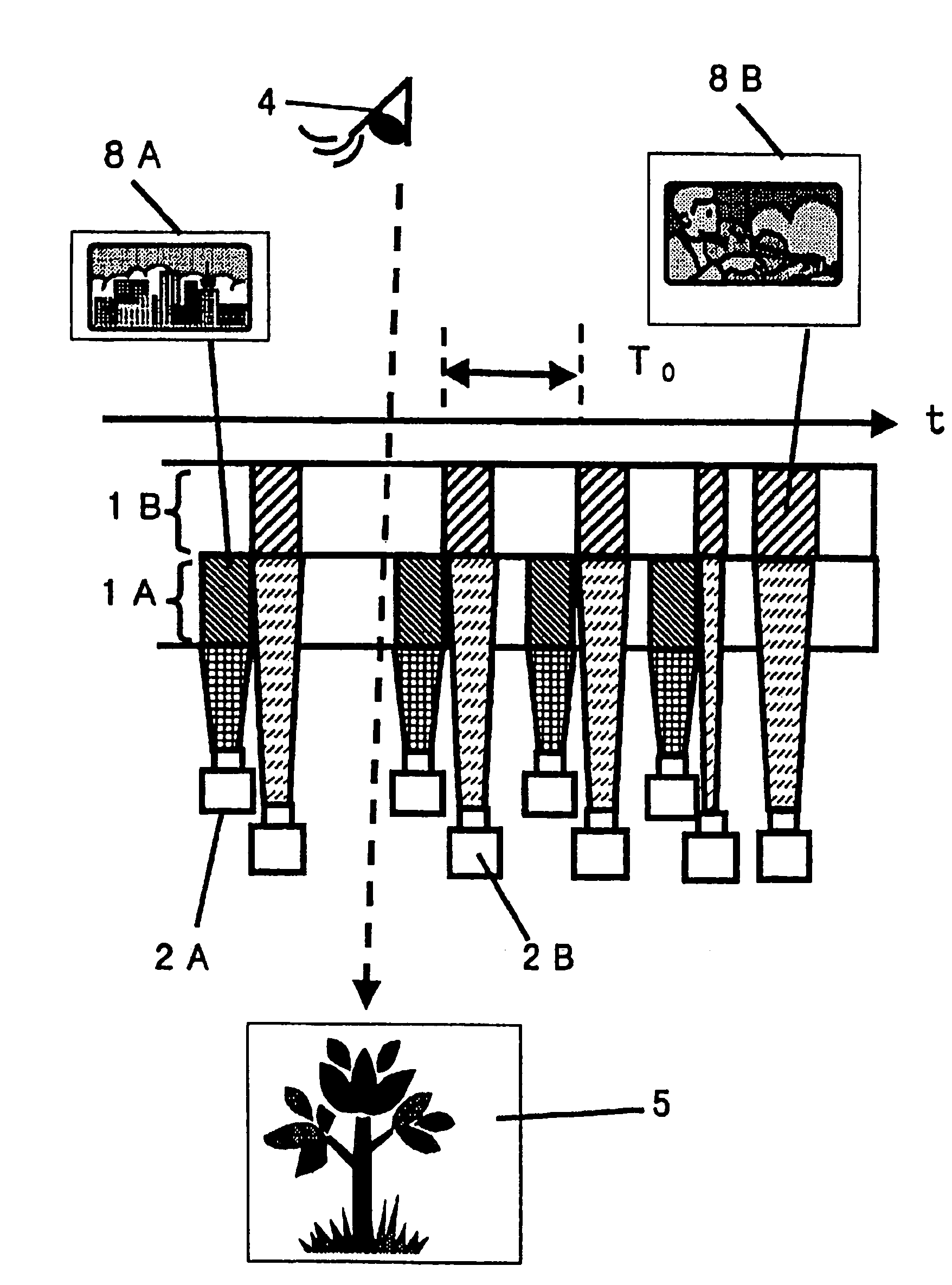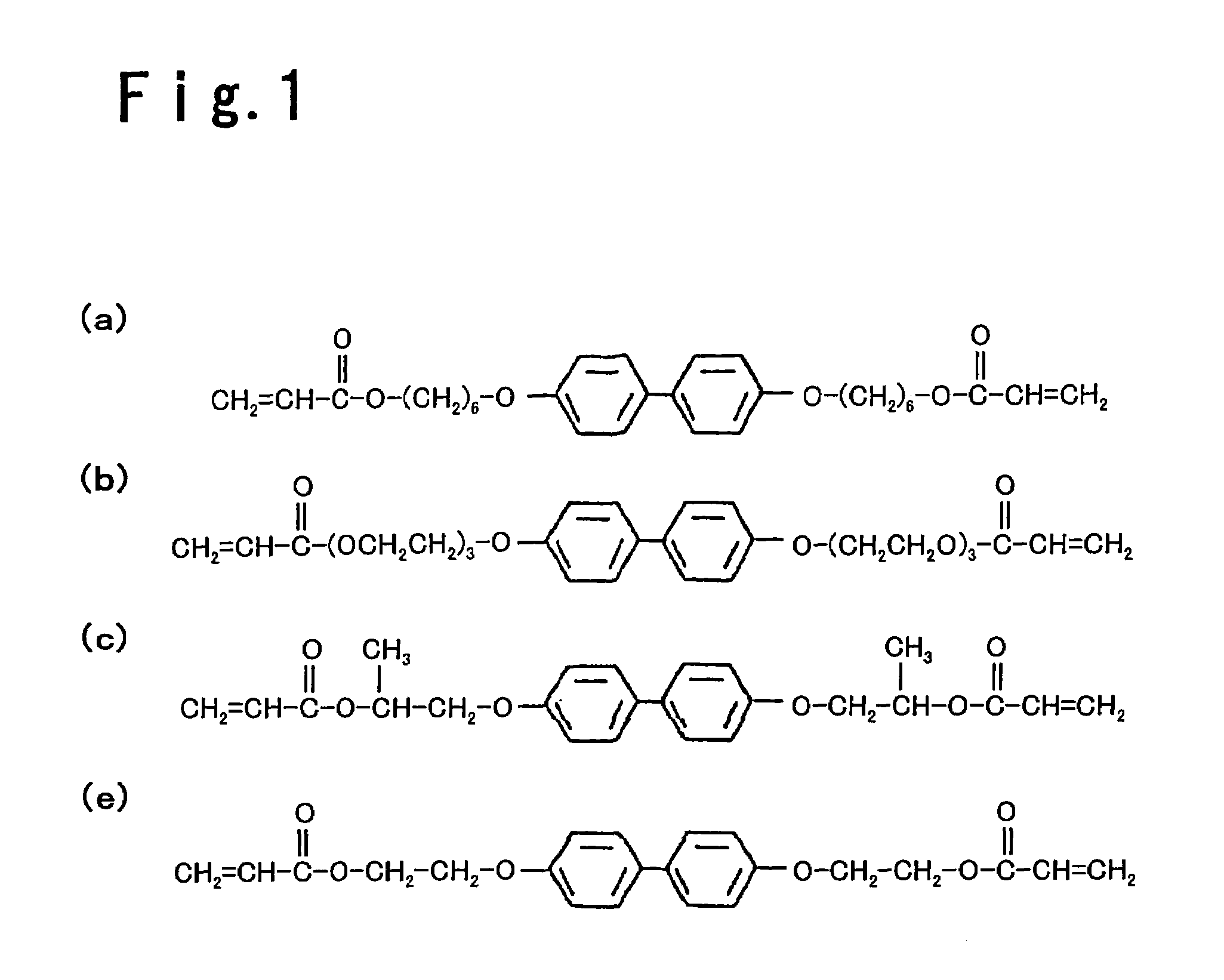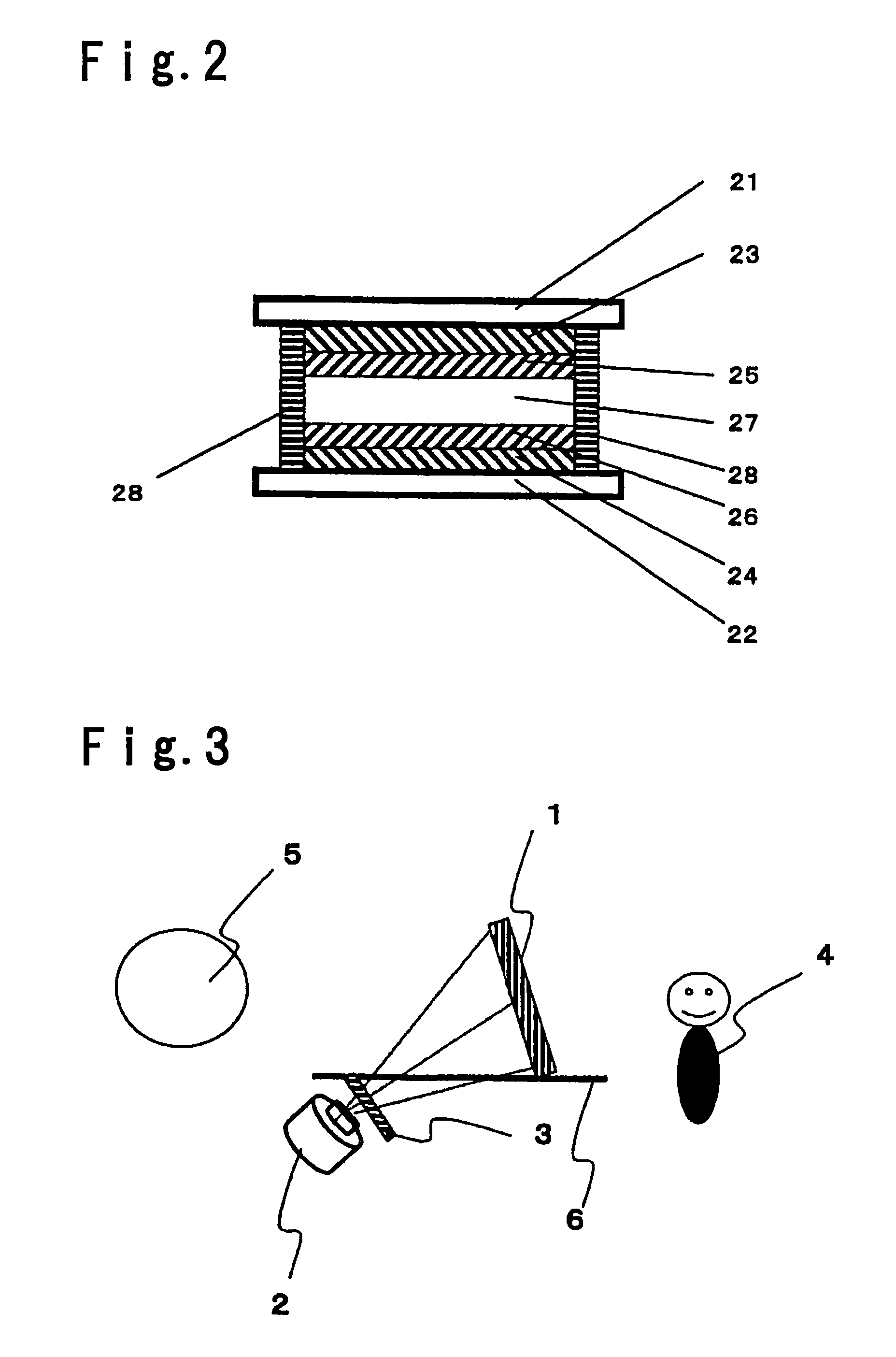Image display system
a display system and image technology, applied in the field of image display systems, can solve the problems of not being able to see an image, affecting the image quality of the image,
- Summary
- Abstract
- Description
- Claims
- Application Information
AI Technical Summary
Benefits of technology
Problems solved by technology
Method used
Image
Examples
example 1
[0144]A screen, which has a cross-sectional shape schematically shown in FIG. 2, was fabricated as follows: First, 80 parts of a nematic liquid crystal having a negative dielectric anisotropy (AG-1016XX, manufactured by Chisso Corporation), 20 parts of a curable compound represented by the formula (a) in FIG. 1, and 0.2 part of benzoin isopropyl ether were blended to prepare a mixed composition.
[0145]Next, a pair of glass substrates, which had polyimide films for vertical alignment (JALS-682-R3, manufactured by JSR Corporation) formed on transparent electrodes and had a length of 200 mm, a width of 200 mm and a thickness of 1.1 mm, were provided so that the polyimide films faced each other. After a very small amount of resin beads having a diameter of 6 μm were sprayed in the gap between the polyimide films, the substrates were bonded by an epoxy resin printed in a width of about 1 mm along the four sides of a substrate, and the epoxy resin was cured. Thus, the screen was prepared s...
example 2
[0154]Two screens, each of which was fabricated in the same way as Example 1, were provided as shown in FIG. 5. The screen 1 and the screen 1′ were provided parallel with each other, having a gap of about 50 mm therebetween. From the position of a viewer, the two screens looked like being provided in a substantially overlapping fashion.
[0155]With respect to the image-projecting unit, two image-projecting units, each of which was the same model as Example 1, were used. With respect to the shutter, two mechanical rotary choppers, each of which was the same model as Example 1, were used and were controlled so as to be operated on the projection timing as shown in FIG. 6. The time periods T11, T12, T21, T22, T1 and T2 were set at T11=4 ms, T12=12 ms, T21=4 ms, T22=12 ms, T1=8 ms and T2=8 ms, respectively.
[0156]An image was displayed on the screen 1 by an image-projecting unit 2, and a character image was displayed on the screen 1′ by the other image-projecting unit 2′. In the image disp...
example 3
[0164]A screen was fabricated in the same way as Example 1 except that the surfaces of the polyimide films for vertical alignment were subjected to rubbing, and the pretilt angle was set at an angle of 70 deg.
[0165]In the driving operation wherein the liquid crystal layer of the screen changed between the light transmissive state and the light scattering state, the rise time was about 1.0 ms, and the fall time was about 1.5 ms.
[0166]The screen 1, the image-projecting unit 2 and the shutter 3 were provided with respect to a viewer 4 in the arrangement shown in FIG. 3. By the image display system in this example, the viewer 4 was able to simultaneously see an image on the screen and a scene 5 behind the screen, being free from flickering, as in Example 1. When a voltage was not applied, the system gave a feeling of expanse to the viewer since the screen completely exhibited the light transmissive state as in Example 1. When the image display system was active, the viewer had an impres...
PUM
| Property | Measurement | Unit |
|---|---|---|
| repetition frequency | aaaaa | aaaaa |
| pretilt angle | aaaaa | aaaaa |
| distance | aaaaa | aaaaa |
Abstract
Description
Claims
Application Information
 Login to View More
Login to View More - R&D
- Intellectual Property
- Life Sciences
- Materials
- Tech Scout
- Unparalleled Data Quality
- Higher Quality Content
- 60% Fewer Hallucinations
Browse by: Latest US Patents, China's latest patents, Technical Efficacy Thesaurus, Application Domain, Technology Topic, Popular Technical Reports.
© 2025 PatSnap. All rights reserved.Legal|Privacy policy|Modern Slavery Act Transparency Statement|Sitemap|About US| Contact US: help@patsnap.com



